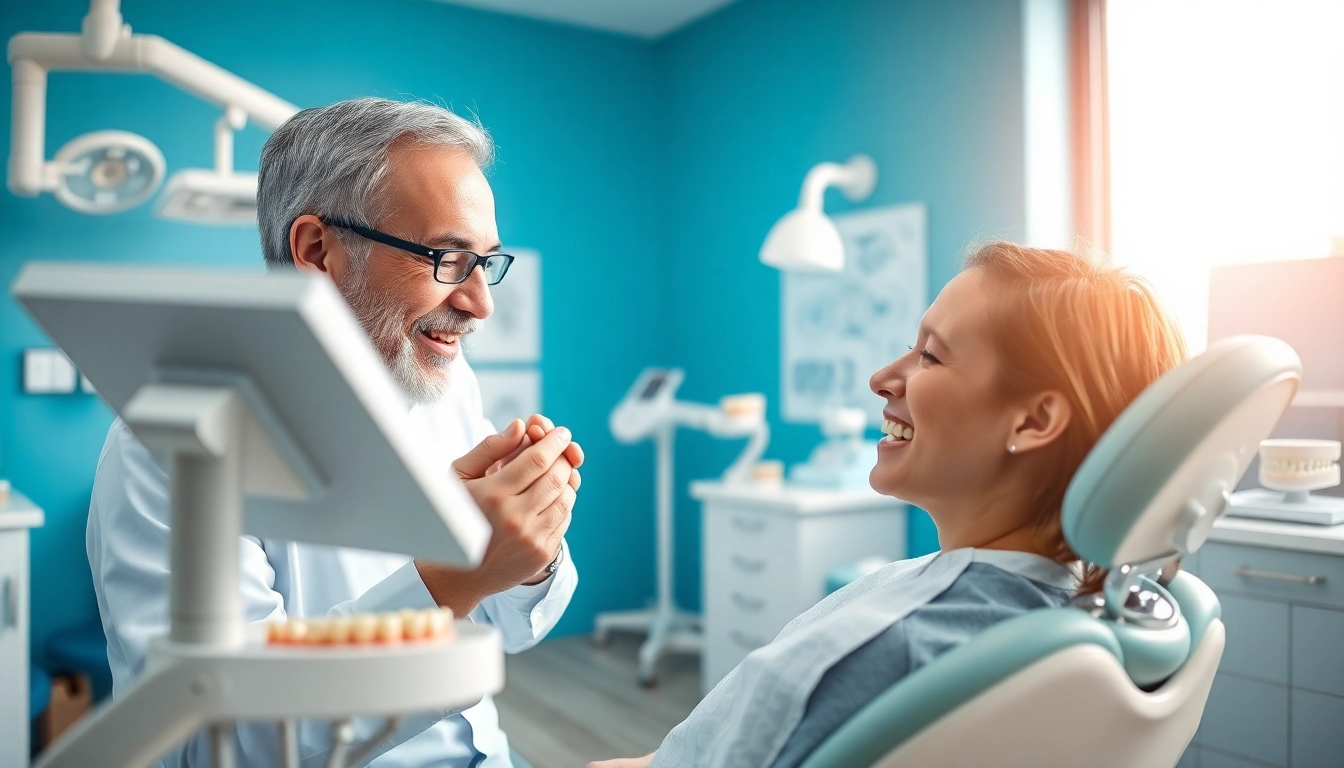Understanding Orthodontics and Its Importance
What is Orthodontics?
Orthodontics is a specialized branch of dentistry focused on diagnosing, preventing, and correcting misaligned teeth and jaws. This field of dentistry combines both art and science to enhance the function and aesthetics of one’s smile. The term ‘orthodontics’ comes from the Greek words “ortho,” meaning straight or correct, and “dontos,” meaning teeth. Orthodontists employ various techniques and appliances, such as braces and aligners, to realign teeth, improve bite issues, and create a harmonious facial profile.
Benefits of Visiting an Orthodontist Myrtle Beach
Visiting an orthodontist Myrtle Beach offers numerous benefits that go beyond just achieving a straight smile. Firstly, it enhances oral health; properly aligned teeth are easier to clean and less prone to decay and gum disease. Secondly, orthodontic treatment can correct bite issues, reducing the risk of jaw pain and other complications. Additionally, many patients experience increased self-confidence and improved social interactions, as a beautiful smile can significantly boost one’s self-esteem.
Common Orthodontic Treatments Available
The range of orthodontic treatments is extensive, tailored to meet the needs of patients of all ages. Common options include traditional metal braces, ceramic braces, lingual braces, and clear aligners like Invisalign. Early intervention for children may also focus on guiding jaw growth and preventing future complications. Each treatment option has its unique advantages, and an initial consultation with an orthodontist will help determine the best course of action based on individual needs.
Choosing the Right Orthodontist Myrtle Beach
Factors to Consider When Selecting an Orthodontist
Choosing the right orthodontist is crucial for the success and comfort of your treatment. Factors to look for include the orthodontist’s experience and specialization, the range of treatments offered, the technology and techniques employed in their practice, and patient reviews. It’s also important to ensure that the office environment is welcoming and that the staff is friendly and professional. Many patients find it beneficial to visit multiple orthodontic offices to gather a broader perspective on their options.
Questions to Ask During Your Consultation
During the consultation, it’s vital to ask pertinent questions to ensure you are fully informed. Inquire about the orthodontist’s experience with specific treatments, the expected duration of the treatment plan, potential discomfort or risks involved, and financial options available for your specific situation. Additionally, ask if the orthodontic practice offers flexible scheduling, emergency care, and what to expect during routine check-ups.
Evaluating Orthodontist Credentials and Experience
When it comes to orthodontic treatment, experience matters. It’s important to verify the orthodontist’s education, training, and board certification. There are several professional organizations, such as the American Association of Orthodontists, that maintain high standards for continuing education and ethics. Always feel free to ask potential orthodontists about their credentials and how often they participate in advanced training to stay updated with the latest in orthodontic technology and practices.
Types of Treatments Offered by Orthodontists
Braces: Metal, Ceramic, and Lingual Options
Braces are one of the most common orthodontic treatments, available in various forms to meet the needs of different patients. Traditional metal braces are known for their durability and effectiveness in treating complex cases. Ceramic braces, while similar in function, blend in with the natural color of teeth to reduce visibility. Lingual braces, on the other hand, are placed behind the teeth and are virtually invisible from the outside, making them a preferred option for many adults. Each type of braces has its unique benefits, and choosing the right one often depends on aesthetic preferences and treatment needs.
Invisalign: A Clear Alternative for Straightening Teeth
Invisalign is a groundbreaking orthodontic solution that utilizes a series of clear aligners to gradually move teeth into their ideal positions. One of the most appealing features of this treatment is its comfort and removability, allowing patients to eat and brush their teeth without obstruction. Invisalign is an excellent choice for both teens and adults seeking a discreet way to correct their smiles. Success with Invisalign requires patient compliance, as aligners need to be worn for 20 to 22 hours a day for best results.
Early and Adolescent Orthodontic Care
Early orthodontic care, often referred to as interceptive orthodontics, aims to address and prevent potential orthodontic issues in children before they manifest into more severe problems. It is typically recommended for children around age 7 when their first permanent molars come in. This intervention can guide jaw growth, make space for crowded teeth, and reduce the likelihood of needing extensive treatment later on. Teenagers often seek orthodontic services to address alignment issues that can affect their self-esteem during crucial developmental years.
What to Expect During Your Orthodontic Visit
Your Initial Consultation: What Happens?
The initial consultation is an essential step in your orthodontic journey. During this visit, the orthodontist will perform a comprehensive assessment that includes taking dental X-rays, photographs, and impressions of your teeth. They will evaluate your bite and alignment issues, discuss your treatment options, and create a personalized treatment plan. This is also an opportunity for patients to ask questions and express any concerns they may have before beginning treatment.
Routine Check-ups: Timing and Expectations
After your treatment starts, you will have periodic check-ups, typically every 4 to 8 weeks. During these visits, the orthodontist will monitor your progress, make necessary adjustments, and ensure that your teeth are moving as planned. Patients can expect some discomfort after adjustments, which usually subsides within a few days. Open communication with your orthodontist during these visits is essential; they can provide guidance and support to address any issues that arise.
Post-Treatment Care and Retainers
Once you complete your orthodontic treatment, your orthodontist will discuss the importance of wearing a retainer to maintain your new smile. Retainers prevent teeth from shifting back to their original positions, ensuring the long-term success of your treatment. Depending on your specific case, you may need to wear your retainer full-time initially, gradually transitioning to nighttime wear. Follow-up appointments will be necessary to monitor your retainer’s fit and the position of your teeth.
Success Stories and Testimonials from Orthodontist Myrtle Beach Patients
Real Experiences: Before and After Transformations
Orthodontic treatments have the power to transform not only smiles but also lives. Many patients describe their experiences with orthodontic care as life-changing. For instance, a patient who once felt self-conscious about their crooked teeth may find renewed confidence after undergoing treatment. The visible before and after transformations are often staggering, showcasing the effectiveness of modern orthodontic techniques.
Patient Testimonials and Reviews
Positive testimonials and reviews from past patients can provide insight into what to expect from an orthodontic practice. Many patients share their satisfaction with the professionalism, cleanliness, and technology used during their treatment process. These reviews can be valuable for prospective patients in choosing the right orthodontist, as they illustrate real-life impacts of the treatment on individuals and families.
Importance of Community Engagement and Patient Relationships
Building strong relationships with patients is a key ethos for many orthodontic practices. Community engagement, whether through hosting events, providing educational resources, or actively participating in local activities, enhances patient care and fosters trust. A practice that prioritizes strong patient relationships will thread a sense of community into the care they provide, strengthening the bond between orthodontists and the families they serve.



